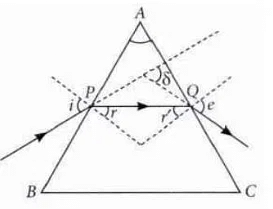Human Eye and Colourful World Class 10 Worksheet Science Chapter 10
Multiple Choice Questions (MCQs)
Q1: What is the function of the cornea in the human eye?
(a) It controls the size of the pupil.
(b) It provides most of the refraction of light.
(c) It is a dark muscular diaphragm.
(d) It is the outermost, transparent part.
Q2: What is the term used to describe the ability of the eye lens to adjust its focal length?
(a) Myopia
(b) Hypermetropia
(c) Accommodation
(d) Astigmatism
Q3: What causes myopia (near-sightedness)?
(a) Focal length becomes too long.
(b) Eye ball becomes too small.
(c) Excessive curvature of eye lens.
(d) Diminishing flexibility of eye lens.
Q4 What is the correction for hypermetropia?
(a) Use of concave lens
(b) Use of convex lens
(c) Use of bifocal lens
(d) Diminishing flexibility of eye lens
Q5: What phenomenon is responsible for the formation of a rainbow?
(a) Dispersion
(b) Refraction
(c) Total Internal Reflection
(d) All of the above
Fill in the Blanks
Q1: The ability of the eye lens to adjust its focal length is called ____________.
Q2: Presbyopia is a defect of vision that occurs in ____________.
Q3: The maximum distance at which an object can be seen clearly is called the ____________.
Q4: The phenomenon of twinkling of stars is due to the fluctuation in the ____________ of the Earth's atmosphere.
Q5: The angle between two adjoining lateral surfaces of a prism is called the ____________.
Match the Column (In a Table)
Question: Match the following:

Very Short Answers
Q1: What would have been the colour of sky if the earth had no atmosphere?
Q2: Which great scientist was colour blind?
Q3: On what factor does colour of scattered light depend?
Q4: Why is a small amount of sodium thiosulphate added to water in tank in the activity to understand reddish appearance of sun at sunrise and sunset?
Q5: A man is wearing glasses of focal length +1m, what can be defect in the eye?
Q6: Why are danger light signals red in color?
Q7: Which part of the human eye helps in changing the thickness of lens?
Q8: Name the light sensitive part of the eye where image of an object is formed.
Q9: Which is the range of vision of normal eye?
Q10: What are light sensitive cells?
Case Study Type Questions
A prism is a transparent refracting medium bounded by two plane surfacesinclined to each other at a certain angle. The refraction of light through a prism follows the laws of refraction. In the prism, refraction takes place on its refracting surface it means when the light enters the prism and when the light leaves the prism. The refraction through a prism is shown. Here, <A is the angle of prism, ∠ i is the angle of incidence of the face AB and ∠e is the
The incident ray suffers a deviation or bending through an angle δ due tothe refraction through prism. This angle is called angle of deviation as shown in figure.
i + e = δ + A
Q1: The angle between the two refracting surfaces of a prism is called
(a) angle of prism
(b) angle of incidence
(c) angle of deviation
(d) angle of emergence
Q2: The angle between the incident ray and the emergent ray is called
(a) angle of emergence
(b) angle of deviation
(c) angle of incidence
(d) none of these
Q3: When a ray is refracted through a prism, then
(a) ∠ ∠δ
(b) ∠ i=∠e+∠δ
(c) ∠δ= ∠e
(d) ∠i > ∠r
Q4: The angle of deviation depends on
(a) refractive index of prism
(b) angle of incidence
(c) both (a) and (b)
(d) none of these
Short Answers Type Questions
Q1: In a human eye, name the following parts.
i. A thin membrane which allows light to enter into the eye?
ii. The muscles which help in changing the focal length of the eye lens?
Q2: The image formed on retina is inverted but we see the object erect. Why?
Q3: Why danger signals are red?
Q4: Why does sky look blue on a clear day?
Q5: Why do you take time to see objects when you enter a dim lighted room from outside in the sun?
Q6: When white light enters the prism, which colour of light deviates/bends the least and which colour bends the most?
Long Answers Type Questions
Q1: A person is unable to read a book properly. From which defect is he suffering? How to correct this defect?
Q2: Make a diagram to show how hypermetropia is corrected. The near point of hypermetropic eye is 1 m. What is the power of the lens required to correct this defect? Assume that the near point of normal eye is 25 cm.
Q3: With the help of well labeled diagram, explain the construction and working of human eye.
You can access the solutions to this worksheet here.
|
80 videos|569 docs|80 tests
|
FAQs on Human Eye and Colourful World Class 10 Worksheet Science Chapter 10
| 1. What are the main parts of the human eye and their functions? |  |
| 2. How does the human eye perceive colors? |  |
| 3. What is the role of the lens in the human eye? |  |
| 4. What is the significance of the retina in the eye? |  |
| 5. How do vision problems like myopia and hyperopia occur? |  |
















